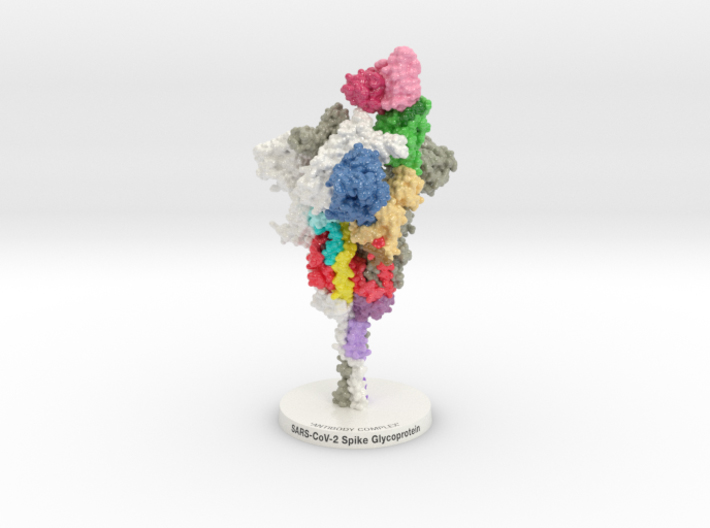
The outbreak of a novel coronavirus (SARS-CoV-2) represents a pandemic threat that has been declared a public health emergency of international concern. The SARS-CoV-2 Spike Glycoprotein is a key target for vaccines, therapeutic antibodies, and diagnostics. Biologic Models designed this 3D printed protein model of the SARS-CoV-2 Spike Glycoprotein 7KS9 to help scientists better visualize these targets.
Biologic Model of SARS-CoV-2 Spike Glycoprotein 3D printed and colored-coded to denote functional domains (NTD blue, RBD green, SD1, light tan, SD2 red-orange-yellow, FP cyan, RRAR brown). SCIENCE recently published the work of Daniel Wrapp crystalizing the current generation of the SARS-CoV-2 Spike Glycoprotein, 2019-nCoV-2. Following the illustrations and supplemental materials describing each domain by amino acid sequence, a series of 3D models were generated for interactive exploration and 3D printing.
Biologic Explorer: 7KS9
To better understand the structural relationship of domain within the Spike Glycoprotein, a protein dataset 7KS9 has been colorized to match our 3d printed model. Explore each domain below after “Initializing” the dataset.
Http iframes are not shown in https pages in many major browsers. Please read this post for details.
